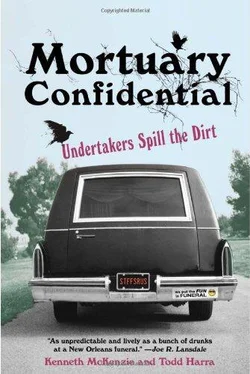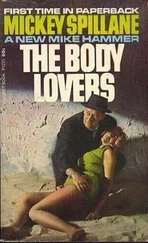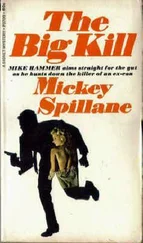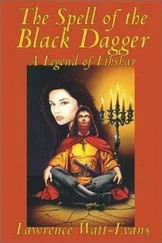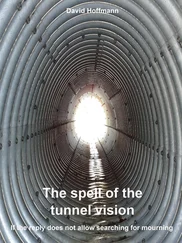I gritted my teeth and kept driving, straight into farm country.
Twenty-five minutes after the funeral service was supposed to start I pulled up to the curb; my face was flushed and my nerves were frayed. I felt like my body would snap, I was so agitated. I had blown it. I had ruined my one big chance to prove myself. When this got back to Mark I was finished!
Forty-five people with arms folded glared at me as I threw the coach in park and killed the engine. I thought the knot in my stomach would jump right out my throat. I squeezed my eyes shut and bit my lower lip so hard I could taste blood inside my mouth, and then I took a deep breath and got ready for the reaming I was sure to receive. I threw open the door and was totally un-prepared for what came.
The daughter of the deceased flew down the church stairs, pushing through the throng of furious faces. “My mother always said she’d be late to her own funeral! Oh, this is just perfect!” She stopped short and looked at me. “Who are you?”
“I’m Lucky. Mark’s wife was rushed to the hospital last night so he sent me.”
“Oh my, I hope his wife is all right!”
I assured her she was.
“And to think, his wife is in the hospital and Mark is still thinking of my family, and having you arrive late so mother would be late. We laughed about her tardiness for a good while when I was in making the funeral arrangements. What a sweet man! He really did think of everything!”
“He’s always thinking of others,” I agreed.
“This just made the funeral perfect, ” the daughter stressed.
I just smiled.
We proceeded with the funeral, and the daughter couldn’t thank me enough.
I accepted the praise with as much grace as I could muster that day. I couldn’t seem to shake the feeling that I had dodged a bullet.
Two days after the funeral Mark approached me while I was painting the eaves of the portico. “The daughter of that funeral you took the other day called me.”
“Oh?” I said, putting my paintbrush down.
He had a funny look on his face. “Thanked me for having you show up late because, I quote, ‘Mother always said she’d be late to her own funeral.’”
“So she’s happy then, I take it?”
He stared at me for a long time. I stared right back. Finally, he broke the silence. “You’re lucky.”
Yes, I am.
CHAPTER 34. Believe in the Butterfly
Contributed by a Young Republican
Afounder of St. Patrick’s Church, Connor McLeod, died. He was 103.
St. Patrick’s Roman Catholic Church is a beacon on a desolate urban landscape, only illuminated once a year, the date of the death of the patron saint of Ireland. On that one day it becomes the epicenter of the city’s focus, but when the green beer has dried up it’s just another neo-Gothic structure in the neo-ghetto.
There was a time when St. Pat’s was more than just a holiday icon, a time before the ethnic lines of delineation blurred and it was an all-Irish neighborhood. It was the time of Connor McLeod when the congregation was a thousand plus strong. The families of the original congregation have moved to the suburbs and the repentant souls that fill the pews on Sundays have shrunk to a pittance.
But when there is a death in the suburbs, the families want to return to their roots in the city, as in the case of Connor McLeod.
Connor’s mother and father emigrated from Ireland in the late 19th century; Connor was born six months after their arrival, a product of their pilgrimage. He grew up in the all-Irish neighborhood and lived there for most of his life until his health forced him to relocate to a suburban rest home. Though he loved St. Patrick’s, in his older years he had resorted to attending daily mass at a local parish. But upon his death, Connor’s family wanted him to be buried from the place of his youth, his home, St. Patrick’s.
Connor decided to die during one of the biggest heat waves the region could remember. Even my father, a fixture in the community, was commenting how he couldn’t remember the heat ever being so bad. The elderly were urged to stay indoors, and the power companies rejoiced at the bonanza. Of course, St. Pat’s was built before air conditioning, and the dwindling congregation’s coffers couldn’t afford to retrofit the building with it. On the day of Connor’s Mass of Christian Burial every window and door to the massive old church was thrown open. Somebody from the church even resurrected a box of old reed fans, printed with the logo Dumphy and Sons, Inc—something my grandfather had provided the church, no doubt.
The humid air hung heavy, stagnant, caught in the vaulted ceiling. The mass proceeded quickly as the congregation sat vigorously fanning themselves. The priest, a monsignor, and friend of Connor’s, celebrated the mass and prepared a special homily for the day. I think the funeral analogy people are most familiar with is likening our lives to the seasons—it seems to be a favorite of the clergy—but on this day the Reverend Monsignor James Shannon likened Connor’s life to the life of a butterfly. He described Connor’s life as a caterpillar, his death as the cocoon, and his rebirth into new life as a beautiful butterfly. It was a touching homily about Connor’s life and his faith.
Just as Monsignor Shannon was wrapping up his homily, a giant blue butterfly flew in through one of the open windows. It sailed down a shaft of light and perched on the pall of the casket. The butterfly gently flapped its wings a couple of times before taking off. It floated lazily over the altar for a few seconds;
Monsignor’s gaze fixed upon it and he faltered. As Monsignor collected himself and finished, the butterfly took off out the window.
It wasn’t a big dramatic event. Even so, I wouldn’t have believed it if I hadn’t been sitting in the rear of the church and had witnessed it for myself.
My father nudged me. “Liam, did you see that?” he murmured.
“Yeah,” I replied uneasily. “Freaky.”
My father smiled at me in a knowing way.
I puzzled over the event as the mass wrapped up, and we processed to the cemetery, lowered Connor into his final resting place, and dropped the family off at their reception hall. What had happened?
There was no doubt in my mind if it had happened. It had happened. Everyone in the congregation, as well as the priest and my father, had witnessed the butterfly. What I was trying to make sense of was what had happened.
Was it a coincidence that Monsignor Shannon was talking about Connor’s rebirth as a butterfly at the exact same moment a butterfly settled on Connor’s casket? I don’t put much stock in coincidences, but I saw the butterfly, and it moved me in a way I can’t explain. I’ve come to the conclusion that the butterfly had nothing to do with coincidence, superstition, or religion. The butterfly was a sign of faith.
Though I’m not an overwhelmingly religious man, I do consider myself a deeply spiritual man—and spirituality is the root of all religions. What transcends religious borders and cultures is the belief, the faith, in the everlasting soul. The butterfly was affirming that faith. It was Connor saying to his family, “Though I’m dead, I live on.”
And it wasn’t hard to see how he lived on. His beautiful family sat in the first three pews in the church he helped found, and his undying faith in his God had allowed him the chance to say one last farewell.
I believe that how you, as a reader, accept this story will say a lot about your individual faith.
Whether you’re Christian, Muslim, Hindu, agnostic, or an atheist, if you haven’t had the chance yet in your life, or are too scared, I urge you to take that first step. It’s only the tiniest of steps.
Читать дальше
